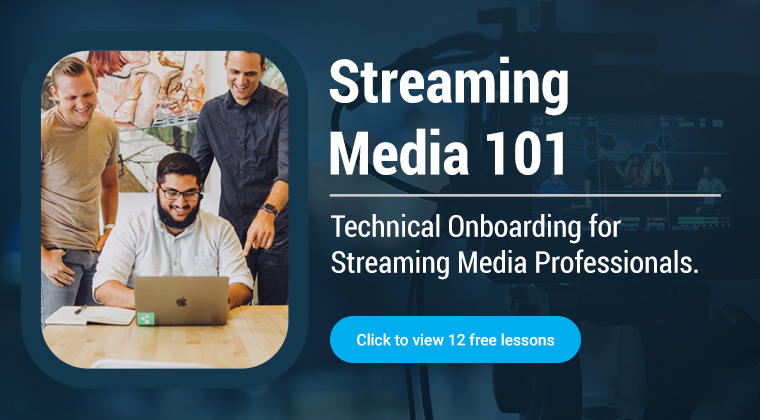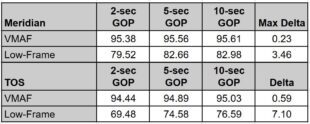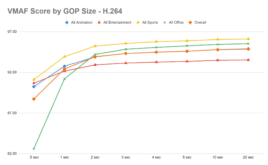I recently tested the Deep Render AI codec and issued a report, which you can read here. The bottom line was that in the tested low-latency use case, the Deep Render AI codec substantially outperformed SVT-AV1 quality-wise and was only slightly behind VVenC. While the codec lacks features like bitrate control that are necessary for most deployments, it offers outstanding integration …
Read More »x265 and WPP: What’s Fast Isn’t Always Efficient
If you’re optimizing x265 for speed, enabling Wavefront Parallel Processing (WPP) looks like a no-brainer. Table 1 shows a staggering 7.3x improvement in encoding time. A 3:15 encode with WPP turns into a painful 23:51 without it. The quality penalty? Negligible. VMAF drops just 0.19, with the low-frame VMAF off by only 0.77 (low-frame is the lowest VMAF score of …
Read More »Why Broadcasters Are Turning to Server-Side Multi-View Solutions
In a recent conversation with Jan Ozer from the Streaming Learning Center, Marc Todd, Founder and CEO of Skreens, shared insights into his company’s background, its mission, and its multi-view technology, which is already deployed by a major US service provider, and available either directly from Skreens or through MediaKind. You can watch the interview on YouTube here, or embedded …
Read More »Review of Multi-Resolution Encoding for HTTP Adaptive Streaming using VVenC
In their paper entitled, Multi-resolution Encoding for HTTP Adaptive Streaming using VVenC, Kamran Qureshi, Hadi Amirpour, and Christian Timmerer from the Christian Doppler Laboratory ATHENA (Alpen-Adria-Universität, Klagenfurt, Austria) propose an accelerated multi-resolution encoding strategy for HTTP Adaptive Streaming (HAS) using VVenC, an optimized open-source Versatile Video Coding (VVC) encoder. Their approach, called MEVHAS (Multi-resolution Encoding in VVenC for HTTP Adaptive …
Read More »Ateme’s Mickaël Raulet Talks AI Codecs and OTT Contribution at Mile High Video 2025
In this interview from Mile High Video 2025, Jan Ozer from the Streaming Learning Center spoke with Mickaël Raulet, CTO of Ateme, about the company’s latest developments in video delivery and encoding technology. Mickaël shared his insights on emerging trends, including AI-based video encoding, advanced DRM solutions, and the growing adoption of new video codecs. You can watch the interview …
Read More »Romain Bouqueau on GPAC, Low-Latency Streaming, and AI at Mile High Video 2025
I sat down with Romain Bouqueau, Founder and CEO of Motion Spell, at Mile High Video 2025 to discuss the latest advancements in GPAC, low-latency streaming, and AI integration. We discussed Motion Spell’s work on packaging technology, its role in low-latency streaming, and the challenges and opportunities of building custom language models for multimedia tools. Romain also shared his thoughts …
Read More »Bitmovin’s Igor Oreper at Mile High Video 2025 Talks New Web Player
At Mile High Video 2025, I sat down with Igor Oreper, Bitmovin’s Chief Strategy Officer, to discuss the company’s latest innovations, including their next-generation web player, advancements in live encoding, and AI-driven contextual advertising. Igor also shared his insights on Bitmovin’s cloud-agnostic strategy and the importance of developer-focused events like Mile High Video. You can watch the interview on YouTube …
Read More »Ultra-Low Latency Video Control – An Interview with Jean-Baptiste Kempf of Kyber
At Mile High Video 2025, I sat down with Jean-Baptiste Kempf (JB), founder of Kyber and lead developer of VLC, to discuss his latest innovations in ultra-low latency video control. JB is well-known in the open-source community for his work on VLC Player and FFmpeg, and now, with Kyber, he’s pushing the boundaries of real-time machine control. You can watch …
Read More »Comparing Fixed GOPs to Variable GOPs with I-Frames at Scene Changes
I first encountered the line, “Anything worth doing is worth overdoing,” in the Robert Heinlein novel Time Enough for Love. I bring this up because this is my third recent article on GOP size, and I think I’m close to beating this topic into the ground. I’ll let you be the judge. To recount, I reported on testing in an …
Read More »Real-World Perspectives on Choosing the Optimal GOP Size
One of the most fundamental encoding decisions is the size of the Group of Pictures (GOP) or the frequency of I-frames within an encoded file. I-frames, also known as keyframes, are the starting points for groups of pictures, consisting of I-, B-, and P-frames. Traditionally, the GOP size is directed by adaptive bitrate streaming considerations, such as ensuring an I-frame …
Read More » Streaming Learning Center Where Streaming Professionals Learn to Excel
Streaming Learning Center Where Streaming Professionals Learn to Excel












